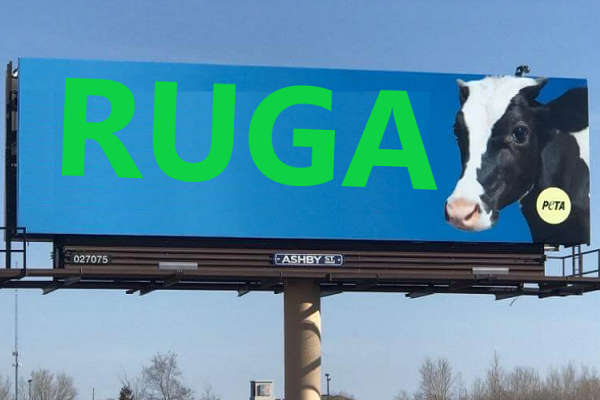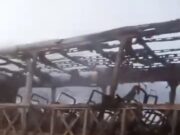
Ibrahim Shuaibu in Kano, Laleye Dipo in Minna, Daji Sani in Yola and Igbawase Ukumba in Lafia
The efforts by President Muhammadu Buhari’s administration to reclaim old grazing routes for herdsmen may be hampered by the building of roads, hospitals, schools and other public utilities on the ways carved out for feeding cattle in the 1950s, THISDAY investigation has revealed.
Contrary to the clamour for an end to open grazing and the need to adopt modern ranching techniques to curb incessant clashes with farmers, Buhari has insisted that the federal government will reclaim the old grazing routes for free movement of herders.
However, THISDAY’s investigation has revealed that the grazing routes have been taken over, over the years, by modern facilities built for the public good.
In Kano State, the state government has acknowledged that the grazing routes have been taken over by public infrastructure, including schools.
Following this development, the state Governor, Dr. Abdullahi Ganduje, has set up a Rural Grazing Area that is popularly known as (RUGA), as part of his government’s efforts to secure alternative grazing areas and accommodation for herdsmen.
Ganduje’s Chief Press Secretary, Mr. Abba Anwar, told THISDAY at the weekend that the RUGA in Kano has become the first cattle herders’ settlement in the country, where the nomads are to be accommodated for expansive grazing of their flock.
He stated that the first phase of 25 housing units out of the projected 200, situated on 4,413 hectares of land at Dansoshiya Forest in Kiru Council Area of the state has been delivered by the state government.
Anwar added that work is in progress on phase two and phase three of the project.
THISDAY gathered that at Falgore forest in Tudun Wada Local Government Area, the remnants of the cattle routes have been lost due to the infiltration of bandits and their attendant negative activities.
Ganduje, however, has urged herders to stop open grazing and return to the state, saying there is now modern grazing of animals going on at Dansoshiya Forest.
He said the investments made by his administration in grazing areas would curb the recurring clashes between herders and farmers.
The governor added that fodder seeds, which will be cultivated at Dudduru in Ajingi Local Government Area will be planted at Dansoshiya Forest to provide feeds for cattle and other small ruminants.
Although Niger State has 11 grazing routes, covering about 1,865 kilometres, 1,368 kilometres of these routes are primary routes while the remaining 496 kilometres are secondary routes.
THISDAY gathered that the Magama to Rijau route is an international route linking the country with the Benin Republic from Borgu Local Government Area of the state.
But the Permanent Secretary in the state Ministry of Livestock and Fisheries Development, Dr. Jonathan Wasa, told THISDAY in an interview that all the routes have been encroached upon by major highways, private developers, including small-scale industries.
According to him, with the advent of development, cattle now share the major highways with motorists.
He stated that the state does not have the resources to reclaim the routes taken over by highways and other infrastructure.
Wasa said due to the encroachment on the grazing routes, the major focus of the state government is to organise nomads and others into groups and settle them in grazing reserves as being done in other parts of the world.
He stated that there are the Bobi grazing reserves, which span over 36,000 hectares located in Mariga and Magama local government areas.
In addition, the state government has also designated seven other reserves. These include: Audi Kanchi in Lavun LGA, Sheyi in Shiroro LGA, Garin- Gabas in Rafi LGA, Gabi in Lapai Ndadokun and Kpotun Woro in Agaie LGA and Iri in Rijau LGA.
“We are advocates of ranching but it has to be done gradually; it cannot be done abruptly,” Wasa added.
In Adamawa State, the Permanent Secretary of the State Ministry for Livestock Production, Alhaji Abdulrahman Tukur, told THISDAY that the state government had set up a committee to address the frequent clashes between farmers and herders.
He said the committee had submitted its report to the state government in which is recommended, among others, that the state government should reclaim the grazing reserves for the settlement of herdsmen and stop their movements.
Tukur said the old grazing routes had been taken over by schools, primary healthcare centres, roads, petrol stations and other facilities, which will not allow for movement of cattle.
He said the ministry had earlier before the wet season set up a committee for each of the 30 grazing reserves gazetted and identified in the map of the state to sensitise stakeholders on the plan to reclaim the grazing reserves to settle the herders.
He explained: “The committees are working with already list of encroachers on the grazing reserves and discussions are in top gear to reclaim these grazing reserves.
“Those farmers that are farming on the grazing reserves; we allow them to continue farming temporarily but when they do their harvest, they would allow the herders’ cattle to feed on the residues of their crops until we make the condition better for herders and stop them from movement.”
In Nasarawa State, THISDAY gathered that the state government has donated all the seven grazing reserves located at Awe, Keana, Doma, Assakio, Konva, Gitata and Kurudu to the federal government for the National Livestock Transformation Programme (NLTP), as part of the efforts to stop the free movement of cattle.
The Commissioner for Agriculture and Water Resources, Prof. Alanana Otaki, told THISDAY that the state government has succeeded in claiming all gazetted cattle grazing reserves in the state without hitches.
The Sokoto State Government has also reclaimed the grazing reserves to settle herdsmen.
In a telephone interview with THISDAY, the Commissioner for Careers and Security matters, Col. Garba Moyi (rtd), said the reserves were inside the forests.
“For us in Sokoto, the policy is not new to us. I could recall when I was a local government chairman some years ago, I introduced the policy which was also adopted by other local governments in the state,” he said.
Moyi added:” “Most of these grazing reserves are in the bush and we directed the Fulani to graze on any crop planted on them.”
Also, the Zamfara State Government stated that it would use the grazing reserves to resettle the herders, being the worst hit by the clashes between herders and farmers.
The Special Adviser on Media and Public Enlightenment to the Governor, Mr. Zalaini Bappa, said even some former governors who trespassed on the grazing reserves returned the land.
According to him, the state government has also started building Ruga for the Fulani in order to prevent clashes between herders and farmers.
Source: ThisdayLive


















































